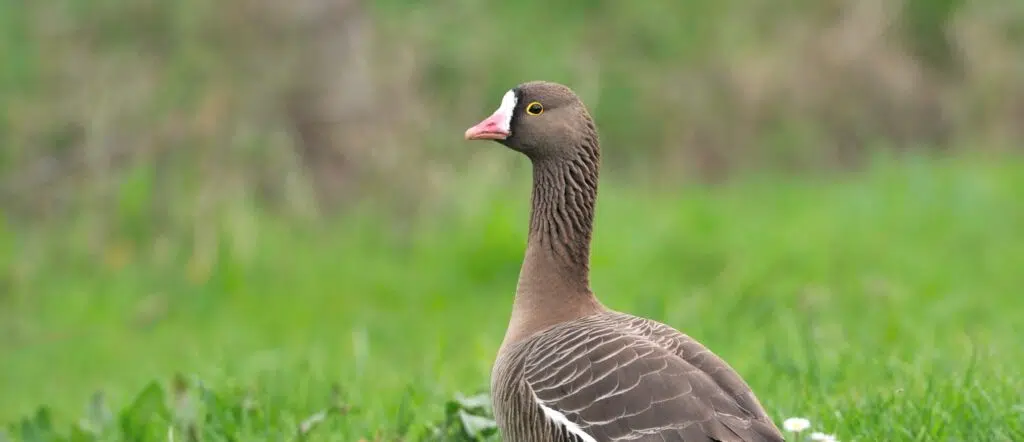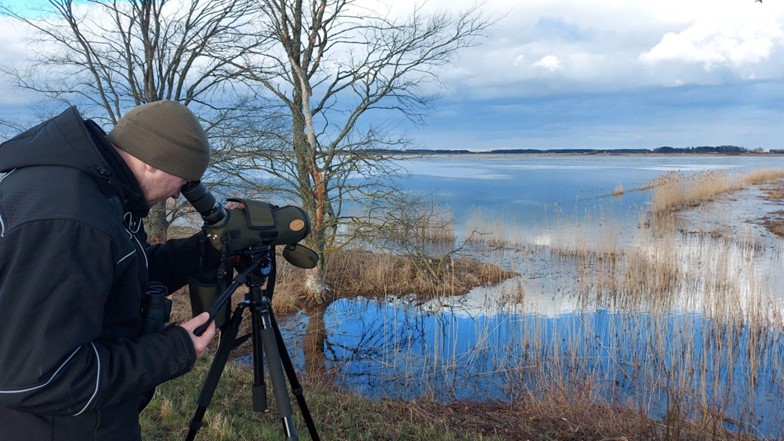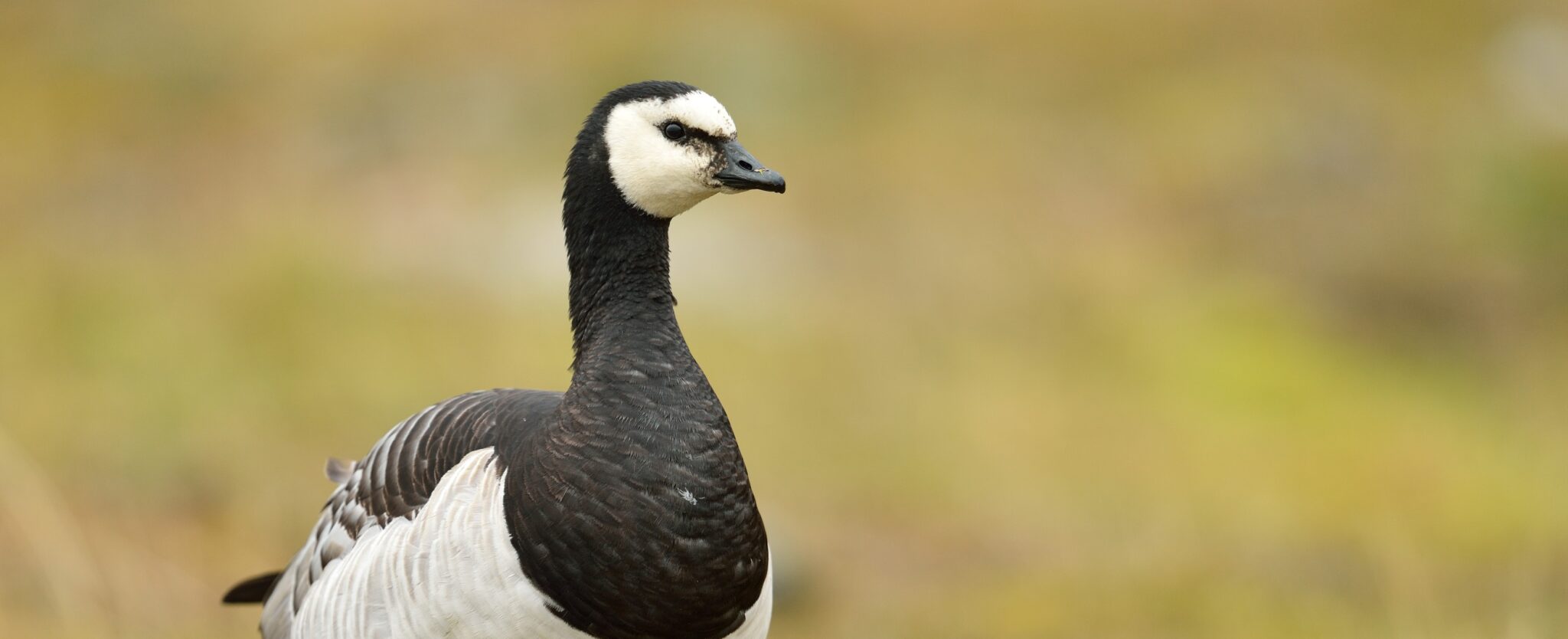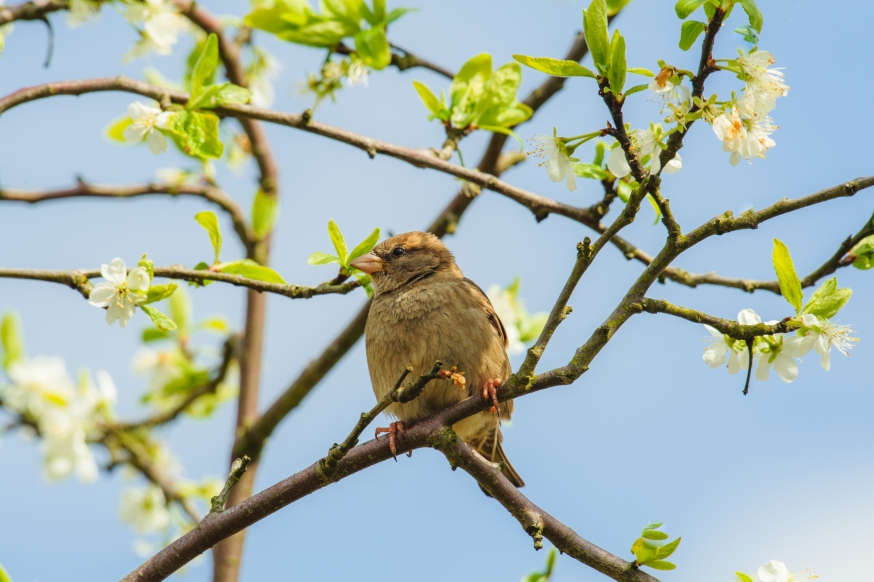Bringing back Europe’s rarest goose

The Lesser White-fronted Goose (Anser erythropus) is a rare species that has captivated the attention of ornithologists worldwide. Unfortunately, throughout the 20th century, the Fennoscandian population has plummeted from over 10,000 birds to less than 100. The International Union for Conservation of Nature (IUCN) has designated the status of the species as globally ’Vulnerable’. These small, grey, geese with distinctive yellow eye-rings, are the most endangered breeding goose species in all of Europe.
A goose in danger
The main causes for the decline of this goose are poaching and accidental shooting. In recent years, the combined effects of climate change and the abandonment of traditional agricultural practices have had an adverse impact on their habitat and migratory patterns. On top of that, Lesser White-fronted geese are increasingly vulnerable to Red fox predation in their breeding areas in the north. As lemming populations are collapsing, foxes are more likely to attack the geese.

A joint conservation and restoration effort
With only a handful of these geese remaining in the wild, a collaborative international effort was launched to address the knowledge gaps regarding their reproduction and migration, and to implement effective conservation measures. The “LIFE Lesser White-fronted Goose Climate project”, funded by the EU LIFE programme and led by our Partner, the Lithuanian Ornithological Society (LOD), has brought together professionals from Greece, Hungary, Lithuania, Estonia, and Finland to help bring this bird back from the brink.
With conservation and awareness-raising activities, supported by cutting-edge research and monitoring actions, the team aims to contribute to restoring the Fennoscandian White-fronted Goose population to a favorable conservation status. Since the start of the project in the autumn of 2020, significant progress has been made all across Europe.
LOD together with our Greek Partner, the Hellenic Ornithological Society (HOS), and the Natural Environment & Climate Change Agency have taken significant steps towards restoring previously abandoned, degraded, or mismanaged habitats that are located in the important wintering and staging areas of the Lesser White-fronted Goose.

Meanwhile, Finnish scientists and researchers from Oulu University and Metsahällitus are using innovative research methods to identify potential breeding grounds for these geese in the Finnish Lapland. Simultaneously, WWF Finland is training and expanding the goose monitoring group to new countries to enhance monitoring efforts and data collection. In Estonia, BirdLife‘s Partner, the Estonian Ornithological Society, alongside other partners, has fostered close collaboration with farmers and local communities to raise awareness and build consensus on the ground for the conservation of these species. Lithuanian and Hungarian organizations have been actively advocating for effective changes in legislation to bolster legal measures aimed at halting the decline of these geese. And experts from BirdLife Norway have been collecting crucial data on the goose‘s reproduction, providing valuable insights to experts across Europe.
Birds know no borders, so in order to bring them back from the brink, neither can our work. The unwavering commitment of this international team will hopefully result in a promising future for this remarkable species. If you want to know more about Lesser White-fronted Geese, you can check out the story of Mr. Blue, a goose fitted with a GPS transmitter.
Find out more about the project here and follow Safeguarding the Lesser White-fronted Goose on Facebook.
Co-funded by the European Union. Views and opinions expressed are however those of the author(s) only and do not necessarily reflect those of the European Union or CINEA. Neither the European Union nor the granting authority can be held responsible for them.

Cover picture by Dwerggans Rollins
Written by the Lithuanian Ornithological Society
You might also be interested in:
 | Stichting BirdLife Europe gratefully acknowledges financial support from the European Commission. All content and opinions expressed on these pages are solely those of Stichting BirdLife Europe. The European Commission is not responsible for any use that may be made of the information it contains. |









